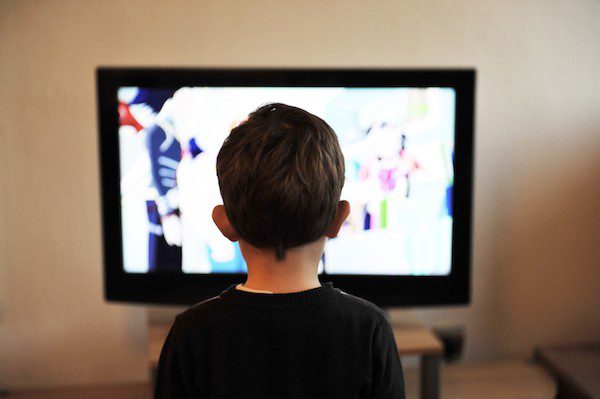The first paid-for television commercial appeared almost exactly 80 years ago. It was aired on July 1, 1941, and the TV commercial is still an effective part of many advertising campaigns.
Times are always changing in television. Yet, an effective TV commercial still has the power to grab an audience. The so-called demise of print media advertising never happened. Marketers still produce effective print material.
Many thought radio advertising would wane too, but it’s still a viable marketing tool.
The same holds for television. As a result, the TV commercial is more visible in more ways than ever before. Different media now work in tandem to create better results.
So, how do you make a TV commercial that people will remember? All it takes is a well-formulated plan to reach the consumer. Keep reading to find out how.
Set the Goal
It sounds simple, but a plan to produce a TV commercial must come with a specific plan. A TV commercial generally lasts between 30 and 60 seconds, so budgeting is essential.
Questions need to ask what the commercial will achieve. There is no room for vagueness when trying to get the point across to the consumer. People talk of the elevator pitch, which is an analogy that fits here.
Within a short time message must first introduce the product or service. Then it will summarize the product before telling the customer how it affects them. Finally, the message will ask the consumer to take action.
That’s a lot to pack into 30 seconds, so the goal of the TV commercial must be clear.
It must also be measurable. Have a tangible result in mind before producing a script. There is no room for overreaching, so the expected result also needs to be attainable. For example, produce a television commercial with a definite timeline.
It’s easier to measure meeting that goal when a firm end date is in place. All parties involved then know all the parameters. TV production works better with a focused approach.
Finally, the goal for an effective TV commercial should be relevant to the situation. For example, if the advertisement intends to reach a local audience, there’s not to go beyond that border. This leads to the next step in producing an effective TV commercial.
Know the Audience
Good marketers understand that all consumers are not created equal. In every part of the world, people feel and think in different ways. That knowledge is key to TV commercial production.
For example, think of how an audience in rural America would react to a product compared to people in cities. Selling a fancy luxury car in farm country won’t resonate like it would in Los Angeles.
Research must go into a targeted audience to reach them with the expected message. Every market has cues that spark people’s interest. Learn the nuances that make the target audience tick.
With the financial commitment involved to make a TV commercial, a wide target will not work. In addition, there is little value in trying to pull in an audience that won’t view the TV commercial.
Learn the audience’s behaviors and characteristics. A message that relates to their unique traits results in an effective TV commercial. Never make assumptions about expectations of how audiences react.
Remember that the viewer is a passive participant. The best way to catch their attention is to speak their language and understand the way they think.
TV commercial production is not the place to be all things to all people. The closer the message is to the audience that views the TV commercial, the easier it is to measure the result.
Keep it Simple
An effective TV commercial pitch begins and ends with a simple message. When making a single point, there’s no confusion in the viewer’s mind. When crafted well, the audience will get the point right from the start.
Clouding the issue with subtle messaging will leave the viewer guessing. That’s the last thing a good TV commercial should achieve. Instead, leave the viewer a clear picture in their mind.
It’s easy to overwhelm an audience with more information than they need. Simplifying the message to a single takeaway will benefit everyone. It also accomplishes another goal.
The simpler the TV commercial’s message, the more memorable it will be. Advertisers talk about ‘hooking’ an audience when they produce a TV commercial. The hook is the one thing the viewer should keep with them after the commercial ends.
Decide before writing the TV commercial what the viewer should remember most. For example, is the price of the product, or is the limited amount available more important?
If brand awareness is the goal, then price and availability are secondary. With a tight message in mind, there’s a better opportunity to leave the viewer wanting more.
Cliff hangers give marketers a chance to spread the message across channels. This means the marketing efforts from other media deliver a cohesive brand message.
The key is not to confuse the issue.
It’s better to make a TV commercial that gets remembered for one thing. A classic example is Wendy’s famous “Where’s the beef?” commercial. Decades later, people still talk about this advertisement.
Making a simple statement takes time to develop. Try out different messages to see which ones resonate best. It doesn’t need to be clever or funny to be poignant. As long as the message is clear, the TV commercial will return results.
Tighten the Script
With the goal of the TV commercial set and an intended audience researched, it’s time to write the script. With a clear message in mind, the next step is to make a TV commercial that fits in the time format.
The first three seconds are the most important part of an effective TV commercial. It has to grab the viewer’s interest to keep watching. Today’s audiences have become desensitized to a lot of television advertising. If they aren’t interested in the first part of the message, they’ll tune out.
The hook to get attention doesn’t have to be shocking or clever. But, it must be clear. So, every part of the TV commercial that follows will flow from the initial point. The story can then focus more on the product or service.
The next several seconds can connect with other forms of media advertising. Again, a developed theme for crossing media channels reinforces the message.
Then, at the end of the TV commercial, there needs to be a call to action. Tell the viewer exactly what’s expected of them. There shouldn’t be any guesswork involved.
The call to action is the measurable aspect of any good marketing campaign. There’s no better feedback than an audience that heeds the call to action.
Hire Professionals
The best way to achieve the desired results is to contract people who know their business. The return on investment will be worth the effort by hiring the right people to produce a TV commercial.
Marketing agencies that know how to deliver clear messages to consumers pay dividends. Make a television commercial that will reap the expected rewards. Work with TV commercial production companies who have shown results.
Each project is different, and nobody recognizes this better than professionals. They know the steps to creating effective TV commercials with lasting value.
Knowing how the process works will help producers hit the mark on the goal of the project. They can add features to a TV commercial to give it more emphasis.
Memorable taglines are part of their business. They can also produce a jingle for the TV commercial to enhance production value. But, of course, professional TV commercial production companies hire talent for the ad too.
From voiceover personnel to actors, marketers access talent pools for every need. There’s a lot that goes into making a TV commercial. So why leave it to chance?
There is a lot of value in finding a marketing company that knows the audience well. A local agency will have a keen sense of what resonates with viewers in the region.
That’s half the battle won when working on an effective TV commercial campaign.
Make a TV Commercial
Television advertising is still as relevant today as it has always been. It may not seem that way with the bombardment of other media daily. But, TV commercial production has evolved.
Smart marketers now make a television commercials to coincide with other media platforms. As a result, TV commercial projects that reflect similar messages to digital advertising reach wider audiences.
Yet, they also reach targeted audiences faster. Television in all its forms is still prevalent worldwide. TV commercial production enhances cross-media campaigns and still stands on its own so, if you’re looking to make a TV commercial that will exploit your brand, give us a call for a quote today.


